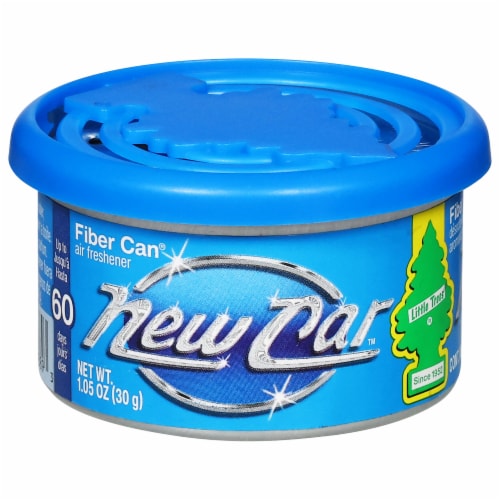Brand New Car Scent: Decoding the Elixir of Newness
Brand New Car Scent: Decoding the Elixir of Newness cars.truckstrend.com
The moment you step into a brand-new car, an unmistakable aroma envelops you. It’s a scent that transcends mere cleanliness; it speaks of possibility, luxury, and a fresh start. This distinctive "brand new car scent" is more than just a pleasant smell; it’s a complex chemical symphony, a powerful marketing tool, and a source of both delight and debate. For many, it’s the signature of a significant investment, a symbol of pride and accomplishment. But what exactly is this captivating aroma, where does it come from, and what does it mean for us? This comprehensive guide delves deep into the essence of the brand new car scent, exploring its chemistry, psychology, maintenance, and future.
What is Brand New Car Scent? The Chemistry Behind the Aroma
Brand New Car Scent: Decoding the Elixir of Newness
Contrary to popular belief, the brand new car scent isn’t a single, intentionally added fragrance. Instead, it’s a fascinating byproduct of the "off-gassing" process from the myriad of materials used in a vehicle’s interior construction. When these materials, often polymers, adhesives, and fabrics, are new and heated (even by ambient temperatures), they release Volatile Organic Compounds (VOCs) into the air. The "new car smell" is, in essence, a complex cocktail of these airborne chemicals.
The exact chemical composition varies significantly between car manufacturers, models, and even individual vehicles due to differences in materials and production processes. However, common VOCs identified in new car interiors include:
- Toluene: A solvent found in paints and adhesives.
- Ethylbenzene: Present in plastics and synthetic rubbers.
- Xylene: Used in coatings and adhesives.
- Styrene: A building block for many plastics, particularly polystyrene.
- Formaldehyde: A ubiquitous chemical found in glues, resins, and various textiles.
- Acetaldehyde: Can be a byproduct of plastic degradation or present in some adhesives.
- Acetone: A solvent used in many industrial processes.

These chemicals originate from a vast array of interior components:
- Plastics: Dashboards, door panels, consoles, and trim pieces.
- Adhesives and Sealants: Used to bond components, fabrics, and insulate.
- Fabrics: Seat upholstery, headliners, carpeting, and floor mats.
- Leather and Leatherette: Tanning agents, dyes, and protective coatings.
- Paints and Coatings: On various interior surfaces and components.


The intensity of the scent is highest when the car is brand new, as the off-gassing rate is at its peak. Over time, as the VOCs dissipate and the materials "cure," the smell gradually fades, typically within a few months to a year, depending on usage and ventilation.
The Allure and Psychology of Brand New Car Scent
The appeal of the brand new car scent goes far beyond its chemical composition; it taps into deep psychological and emotional triggers.
- Sensory Pleasure and Excitement: For many, the scent is inherently pleasant, evoking feelings of excitement, satisfaction, and novelty. It’s a key part of the new car buying experience, signaling a fresh, untouched product.
- Association with Luxury and Success: A new car is often a significant purchase, representing achievement, freedom, and a step up in life. The unique scent becomes inextricably linked with these positive associations, reinforcing the perception of quality and luxury.
- Marketing Tool: While not deliberately added as a fragrance, car manufacturers are keenly aware of its psychological impact. The scent subconsciously enhances the perceived value and desirability of the vehicle, contributing to the overall "new car" experience. Some even strive to maintain a consistent "house smell" across their models.
- Cleanliness and Purity: The scent implies a pristine, untouched environment, free from the accumulated odors of previous owners or everyday life. It suggests a blank canvas, ready for the owner to infuse it with their own experiences.
- Nostalgia and Emotional Connection: For those who grew up associating the smell with family road trips or special occasions, it can evoke powerful feelings of nostalgia and comfort, creating an emotional bond with the vehicle.
This potent combination of sensory pleasure and positive associations makes the brand new car scent a powerful, albeit often subconscious, element of car ownership.
Maintaining and Recreating the Brand New Car Scent
While the original scent inevitably fades, there are strategies to preserve its essence or even recreate a similar experience.
Preserving the Original Scent
- Ventilation (Strategic): Initially, airing out the car can help dissipate the most volatile and potentially irritating VOCs. However, to preserve the "good" elements of the smell, avoid excessive ventilation that completely flushes out the interior. A balance is key.
- Avoid Harsh Cleaners: Using strong chemical cleaners or air fresheners can overpower or chemically alter the original scent. Opt for mild, pH-neutral interior cleaners designed for specific materials.
- Protect the Interior: UV radiation and extreme temperatures accelerate the breakdown of materials and the release of VOCs. Use sun shades, park in the shade, and maintain a moderate interior temperature to slow down the scent’s dissipation.
- Regular, Gentle Cleaning: Dust and grime can accumulate and absorb odors. Regularly vacuuming and wiping down surfaces with a damp cloth (using only water or a very mild cleaner) can help maintain a fresh, neutral base for the remaining "new car" notes.
Recreating the Scent
Recreating the exact chemical signature is nearly impossible, but many products aim to mimic the sensory experience.
- Dedicated "New Car Scent" Air Fresheners: These are perhaps the most common solution. Available in sprays, diffusers, vent clips, and hanging trees, they contain fragrance compounds designed to evoke the specific notes of a new car interior. Look for ones that are not overly sweet or artificial.
- Interior Detailing Products: Specific cleaners and conditioners for leather, vinyl, and plastic can refresh the materials themselves, releasing subtle notes that contribute to a "like-new" smell. Leather conditioners, in particular, can restore the rich aroma of real leather.
- Ozone Generators (Use with Extreme Caution): These devices can eliminate stubborn odors by oxidizing odor-causing molecules. While effective for removing bad smells, they should not be used to create a new car smell and must be used in an unoccupied vehicle with proper ventilation afterward, as ozone is a respiratory irritant. This is more for odor removal than scent creation.
- Professional Detailing Services: High-end detailers often use specialized products and techniques to deep clean and condition all interior surfaces, bringing them back to a near-factory state. While they don’t "add" the new car smell, the thorough cleaning and conditioning of materials can refresh the interior scent profile.
- DIY Methods: Maintaining a meticulously clean interior, regularly vacuuming, and wiping down surfaces with a damp microfiber cloth can prevent stale odors from developing, allowing any lingering original scent to remain prominent.
Health and Safety Considerations of Brand New Car Scent
While appealing, the chemical cocktail that forms the new car scent has raised health concerns. The presence of VOCs, especially in a confined space, can impact indoor air quality.
-
Potential Health Effects: Exposure to high concentrations of VOCs can lead to "sick car syndrome," characterized by symptoms such as:
- Headaches and dizziness
- Nausea
- Eye, nose, and throat irritation
- Respiratory issues (especially for those with asthma or allergies)
- Fatigue
-
Long-Term Concerns: While acute symptoms are usually temporary, the long-term effects of chronic low-level VOC exposure are still being studied. Some VOCs are known carcinogens or reproductive toxins at higher concentrations.
-
Mitigation Strategies:
- Ventilation is Key: The most effective way to reduce VOC concentrations is to air out the car frequently, especially during the first few weeks or months of ownership. Drive with windows open, or park with windows slightly ajar (if safe) when the car is new.
- Sunlight Exposure: Parking the car in direct sunlight with windows slightly open can help accelerate the off-gassing process, releasing VOCs more quickly.
- Charcoal Filters: Some aftermarket cabin air filters contain activated charcoal, which can help absorb some VOCs.
- Avoid Excess Heat: High temperatures increase off-gassing rates. Try to keep the interior cool when possible.
-
Industry Efforts: Recognizing these concerns, many automotive manufacturers are actively working to reduce VOC emissions from interior materials. This includes using lower-VOC adhesives, water-based paints, and alternative, more sustainable materials. Some brands promote their vehicles as having "low-odor" or "healthy" interiors.
The Future of Brand New Car Scent
The perception and creation of the brand new car scent are evolving.
- Shifting Consumer Preferences: As awareness of indoor air quality grows, some consumers are less enchanted by strong chemical odors and prefer a neutral or even "healthier" smelling interior.
- Sustainable Materials: The drive towards more sustainable and eco-friendly materials in car manufacturing often coincides with lower VOC emissions. Plant-based plastics, natural fibers, and recycled materials tend to off-gas less than traditional petroleum-based components.
- Personalized Scents: While the original new car scent might fade or be engineered away, the future could see cars offering customizable, integrated scent delivery systems, allowing owners to choose their preferred aroma.
- Regulation and Standards: Growing pressure from regulatory bodies and consumer groups may lead to stricter standards for VOC emissions in vehicle interiors, further influencing the "new car smell."
The brand new car scent, in its traditional form, may become a relic of the past as technology and environmental awareness push manufacturers towards cleaner, healthier, and potentially scent-neutral interiors.
Price Table: Products Related to Brand New Car Scent
| Product/Service Category | Description | Typical Price Range (USD) | Notes |
|---|---|---|---|
| New Car Scent Air Fresheners | Sprays, vent clips, hanging trees, diffusers designed to mimic the new car aroma. | $5 – $25 | Wide variety of quality and scent accuracy. Lower-end products can smell artificial. Best for temporary scent boost. |
| Interior Detailers & Cleaners | Products for cleaning and conditioning leather, vinyl, plastic, and fabric, often with a subtle "new car" or neutral scent. | $10 – $50 | Helps maintain the original material integrity and subtle natural smells. High-quality products can refresh materials and release their inherent aroma. Specific products for leather can restore its rich scent. |
| Odor Eliminators (Non-Scented) | Products like activated charcoal bags or enzyme-based sprays that absorb or neutralize existing bad odors. | $10 – $40 | Crucial for creating a "clean slate" before applying any new car scent product. Does not add scent, but prepares the environment. |
| Professional Car Detailing (Interior) | Deep cleaning, conditioning, and restoration of all interior surfaces by trained professionals. | $100 – $300+ | While not specifically for "adding" new car scent, a thorough detail revitalizes materials, removing old odors and allowing any lingering original scent or fresh material scent to emerge. Premium services may use specialized low-VOC products. |
| Cabin Air Filters (Activated Charcoal) | Replacement air filters for your car’s ventilation system that contain activated charcoal to trap odors and some VOCs. | $20 – $70 | Helps filter incoming air and can reduce recirculated interior odors. Contributes to overall fresh air quality, allowing any subtle "new" scent to be more noticeable. |
| New Car Scent Car Perfumes/Colognes | Higher-end, more concentrated fragrance oils designed specifically for automotive use. | $25 – $75 | Often more sophisticated and longer-lasting than basic air fresheners. Can provide a more refined interpretation of the new car smell. |
| UV Sun Shades/Window Tints | Products that reduce UV exposure and interior heat build-up, slowing material degradation and off-gassing. | $15 – $200+ | Indirectly helps preserve the original scent by protecting interior materials from rapid breakdown. Tinting is a one-time cost, shades are reusable. |
Note: Prices are estimates and can vary based on brand, product quality, location, and service provider.
Frequently Asked Questions (FAQ)
Q1: Is the new car smell harmful?
A1: The "new car smell" is composed of Volatile Organic Compounds (VOCs). While the concentrations are generally low and acute symptoms like headaches or dizziness are usually temporary, long-term exposure to certain VOCs can be a concern. It’s recommended to air out a new car frequently, especially in the first few weeks, to reduce VOC concentrations.
Q2: How long does the new car smell last?
A2: The intensity of the new car smell typically diminishes significantly within the first few months to a year of ownership. This is because the materials gradually off-gas their VOCs into the environment. Factors like ventilation, temperature, and usage patterns can influence how quickly it fades.
Q3: How can I get rid of the new car smell if I don’t like it?
A3: The best way to dissipate the new car smell is through consistent ventilation. Drive with your windows down, even slightly, whenever possible. Park in direct sunlight with windows slightly ajar (if safe) to accelerate off-gassing. Using activated charcoal bags can also help absorb some of the odors. Avoid using strong air fresheners that might just mask the smell.
Q4: Can I make my old car smell like new?
A4: While you can’t perfectly replicate the complex chemical off-gassing of brand-new materials, you can significantly refresh your car’s interior. This involves thoroughly cleaning and conditioning all surfaces (leather, vinyl, plastic, fabric), removing any old odors with an odor eliminator (like activated charcoal), and then using high-quality "new car scent" air fresheners or interior detailers that mimic the aroma.
Q5: What chemicals cause the new car smell?
A5: The new car smell is caused by a complex mixture of Volatile Organic Compounds (VOCs) off-gassing from interior materials. Common chemicals include toluene, ethylbenzene, xylene, styrene, formaldehyde, acetaldehyde, and acetone, among others. These originate from plastics, adhesives, fabrics, leather, and paints used in the vehicle’s construction.
Conclusion
The brand new car scent is a fascinating sensory phenomenon, deeply intertwined with our perceptions of quality, luxury, and novelty. From its complex chemical origins in off-gassing materials to its powerful psychological allure, it plays a unique role in the automotive experience. While its charm is undeniable, understanding its composition and potential health implications encourages mindful ventilation and informed choices. As the automotive industry moves towards more sustainable and health-conscious materials, the iconic "new car smell" may evolve, but its legacy as the evocative elixir of newness will undoubtedly endure in our collective memory. Whether cherished or cautiously managed, the brand new car scent remains a signature element of stepping into the future, one fresh-smelling ride at a time.






